Where once, “back in the day,” we’d have to make an excursion to the haberdashery, in today’s time-starved world, most of us do at least some of our shopping online, even for classic menswear and tailoring. But how can you make sure you’re using online resources effectively? Read on for our tips.
How to Shop for Classic Menswear Online
It isn’t surprising that online shopping has become so ubiquitous, considering the role the Internet has played in acquainting us with well-dressed gents and small brands to which we may not otherwise be exposed. Some of the finest items are sold in boutiques across the world and are only accessible via internet orders. So, it’s essential to apply certain techniques to obtain classic menswear online without wasting money on returns.
1. Study the Product Photos
The first key to successful purchases is looking closely at the images available on the store’s website–and we mean very carefully. It’s easy to like something that’s shot beautifully by a professional photographer either in studio conditions or in a stunning locale like the streets of Venice or a castle in Scotland, but don’t be distracted by the artistry. Instead, concentrate on the clothing.
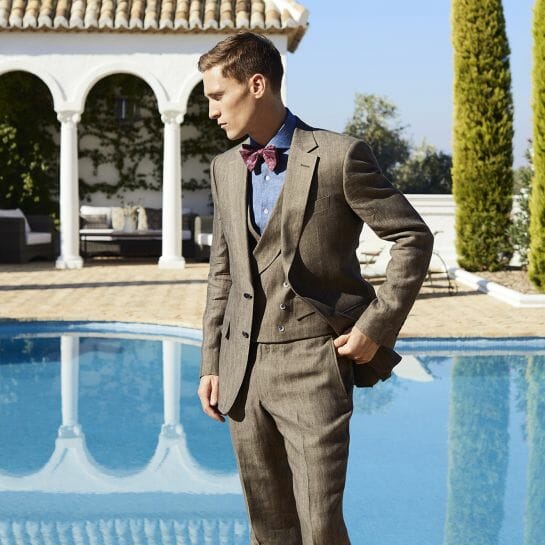
This means looking at as many pictures of what you want to buy as are available. Fortunately, most online shops will provide multiple angles and shots, probably some of a model or dresser’s dummy wearing the product as part of a whole outfit, some front and back shots of the item in isolation, and some close-ups of the material. Fort Belvedere is a great example of this. With a plethora of photos, you can open each image and mouse over to zoom in or blow it up as large as you can to see the details.
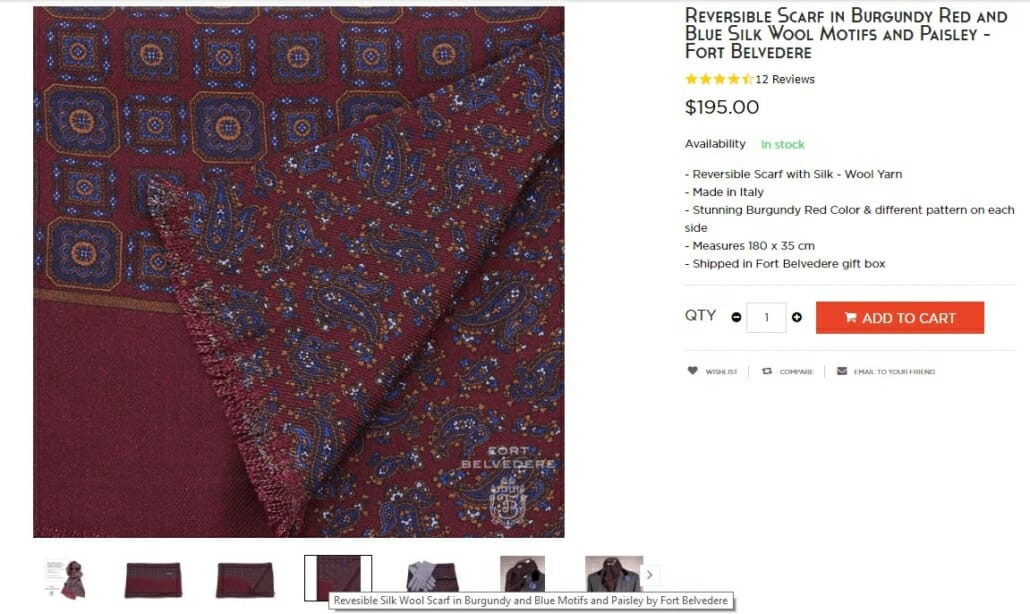
Use a laptop or monitor rather than your tiny phone screen. Depending on site features, sometimes images cannot be expanded big enough to get the best look. In such cases, opening the image in a new tab can help. Using the zoom feature or pinching to spread the image open on a touchscreen to get a view that’s at 150-300% can also be helpful. Key things to focus on are the color, the pattern, and the texture.
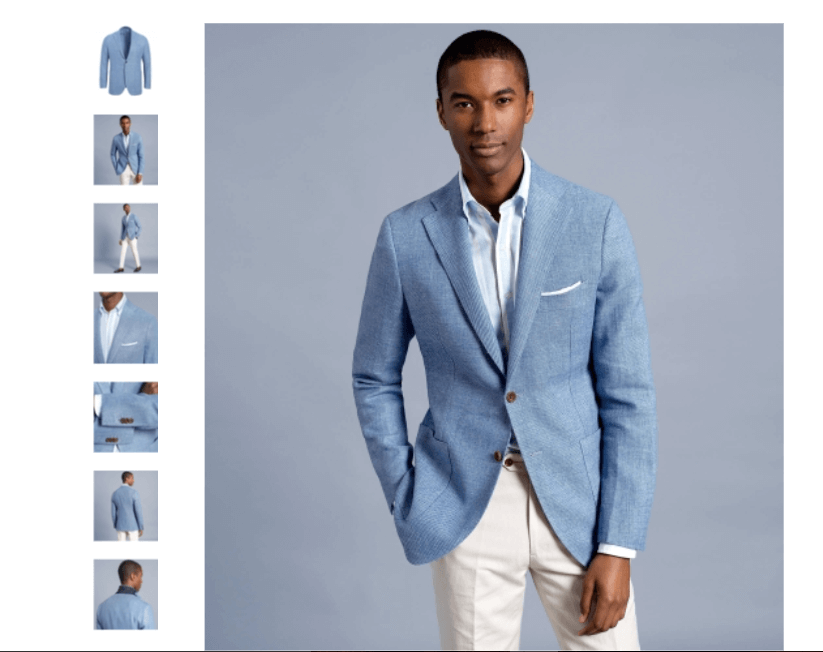
Check the Color and Pattern
Color looks different if the item is shot in a studio or outdoors in the sun. Companies that are considerate will therefore photograph items against a neutral or gray background to present something close to a true representation of the color. Still, most of the time, the color of an item is darker than what you see online, because the photographs make use of bright flash. Screens also differ in how they represent color tones, so try to look at your item on multiple devices. For example, you may have a home laptop, work laptop, tablet and phone; use most (if not all) of them to compare color on the same item. You’ll eventually find which device provides the truest color and learn to rely on that.
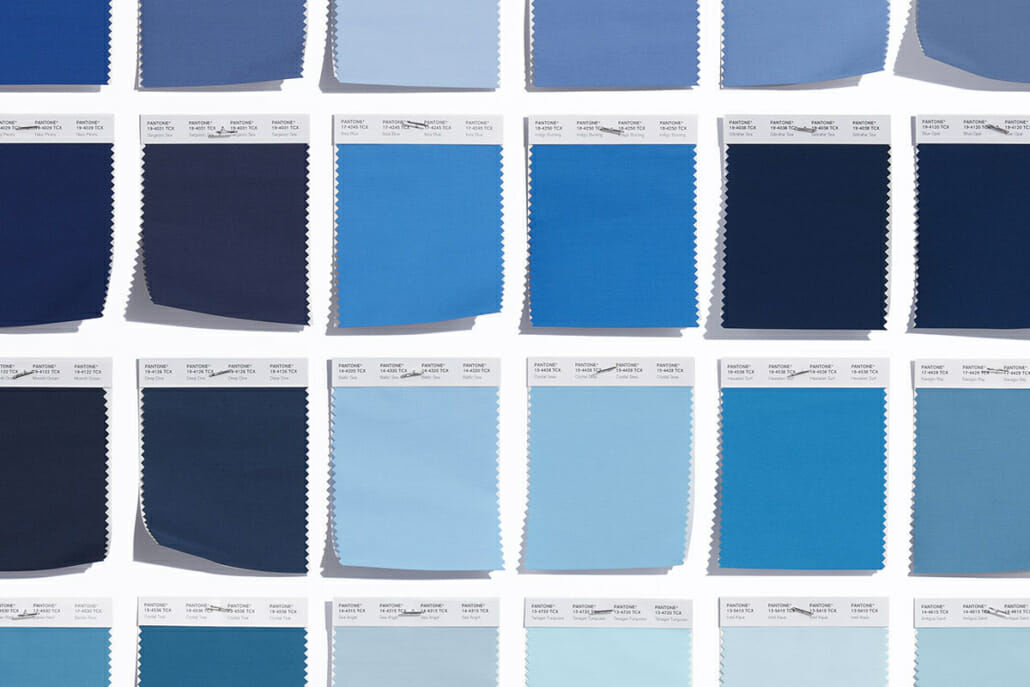
Exact color is particularly important if you have exacting demands and want to coordinate with a specific item you already own. For example, just because something is called “navy” it may be dark or more toward medium blue. This can affect how well it pairs with a particular gray jacket that you own. Tones of off-white are particularly hard to sort out in photographs, so they really deserve a lot of scrutiny. Some off-whites contain yellow undertones, others brown, and others gray, and the difference is important in what you can combine with them.
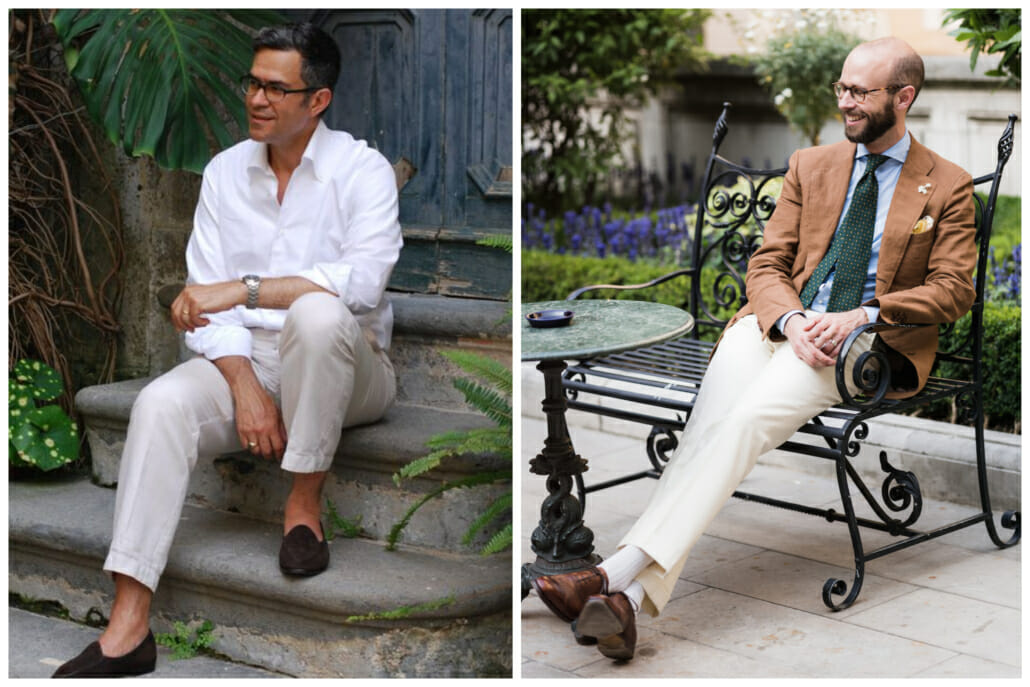
With complex checks and even windowpanes, it can be difficult to sort out the individual colors onscreen. Something that looks like a two-color check can easily contain a hidden third color that isn’t noticeable unless you look closely; lines that seem to be blue can really be green, and any unperceived difference can result in the garment not pairing the way you would like or expect.
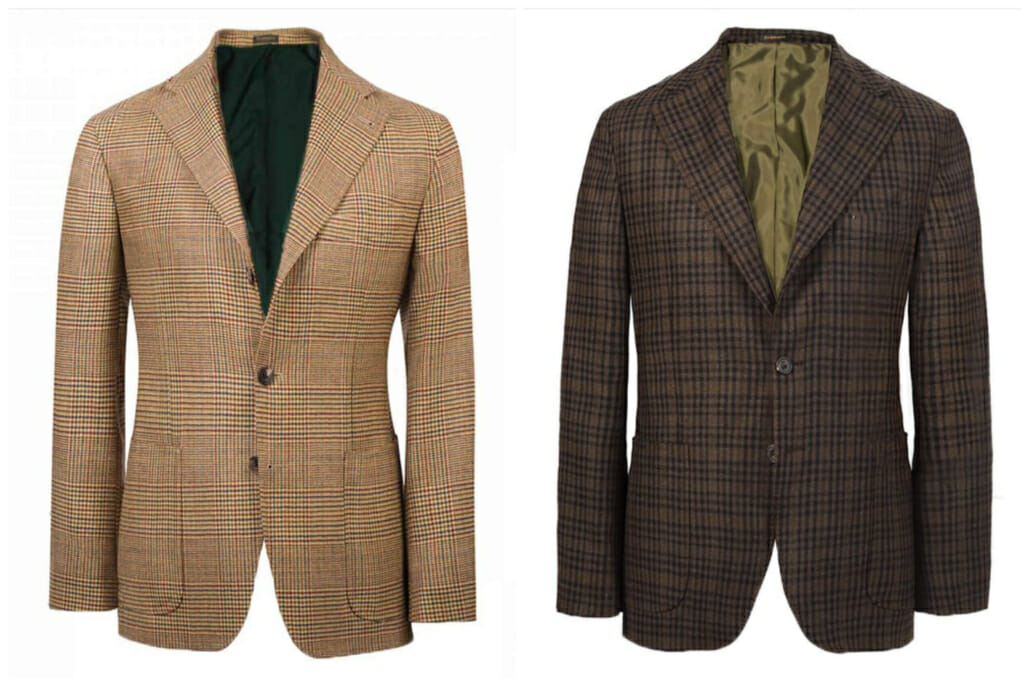
Can you tell what the colors are making up these patterned Rubinacci jackets? The one on the left is red, yellow and green; at right is brown and green.
Examine the Texture
Lastly, examining online images closely can help you notice unexpected pattern or texture. Something that looks like a smooth solid from afar can actually be made up of a micro-pattern or a textured weave comprised of different colored threads. Zooming in can help you make the right choice about buying.
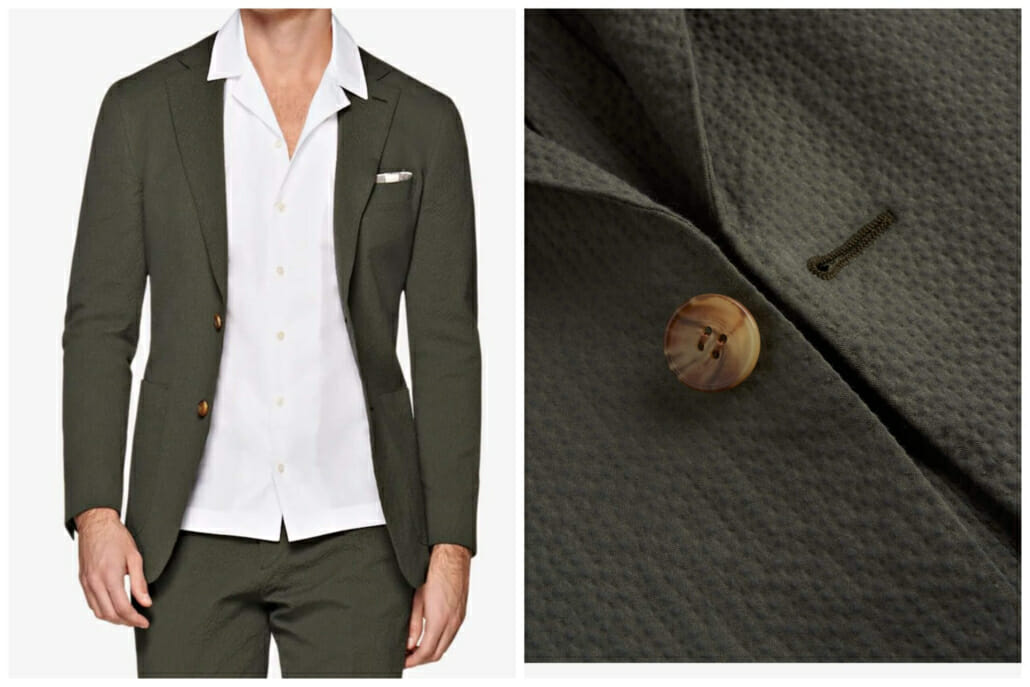
Know What Details to Look for
It’s said that it takes a while for you to develop “the eye,” the ability to look at an article of clothing and spot all the defining features. With practice, you can look at a photo of a suit jacket or sport coat and home in on little things that make a difference to you. As an amateur, you may not be able to tell a peak lapel from a notch, and if a suit is listed as “100% wool,” whether it’s worsted, flannel, or fresco.
After you train your eye from viewing a lot of examples and simply learning about technical details from reading articles on The Gentleman’s Gazette, the details will be easy to spot, and you’ll be able to identify a summer fresco from its weave or a winter flannel from its brushed look at a glance. You can also see whether a jacket’s gorge height (where the notch of the lapel is located) and the buttoning point are where you like them to suit your physique. You’ll be able to judge things like how thick a knot will result from tying a tie based on seeing the fabric in a photo, or whether a jacket’s length will hit at the right spot. You may not know these things until after you’ve tried (and returned) a bunch of different items, but once you know what you’re looking for, you can easily check for them in a product image.
Match Photos to Your Existing Wardrobe
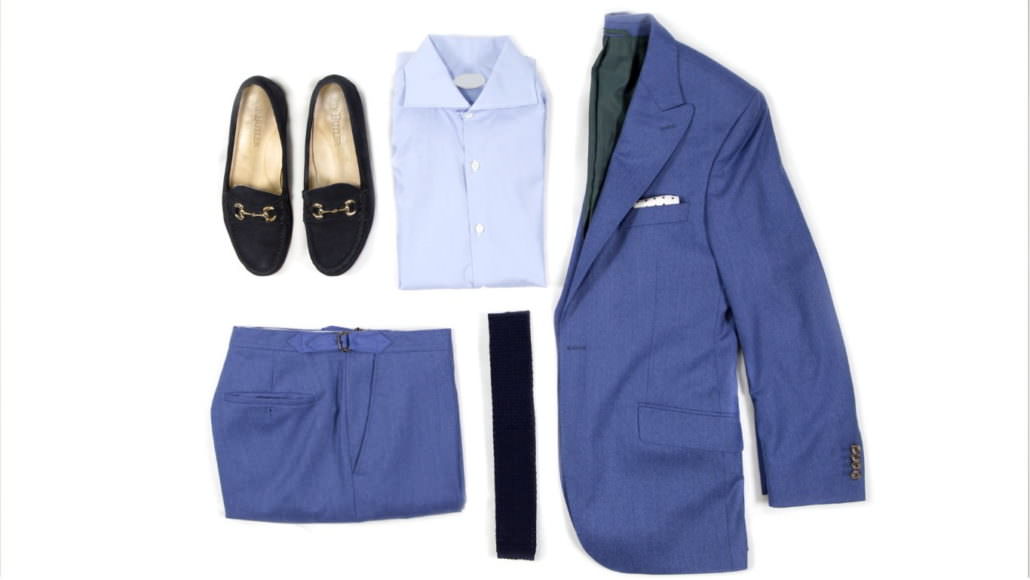
Here’s a unique tip from the author (Dr. Christopher Lee): a somewhat unusual thing that I do when I find something I like online is to blow it up to a decent size and hold it up next to something I already own that I would coordinate with the item. This is especially useful when considering bolder, and therefore riskier, colors online. Try to get a true rendition of the tone on screen, and put it next to the things you own. Ties are easy to expand to close to actual size, so I put on a shirt and jacket and hold the tie up to them on my tablet. If I see a pair of pants in an interesting color online, I lay a shirt and jacket on my bed and put the screen next to them. This has saved me from buying items that would not have been a good match to my existing wardrobe.
2. Buy What You’ll Actually Wear
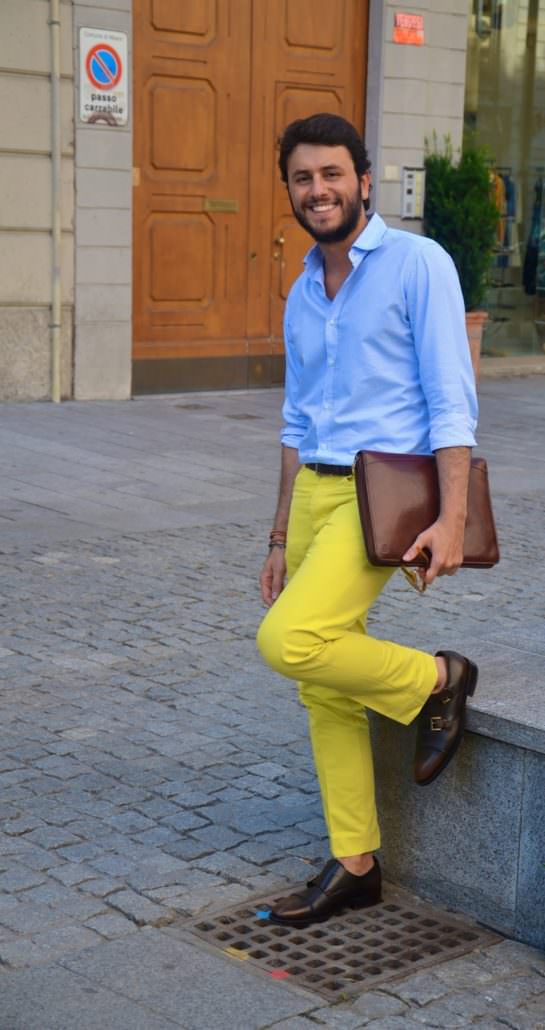
Related to the principle of buying to fit your wardrobe, it’s also important to buy for your taste and lifestyle. Bright summer pants may look great on an Italian model, but if they’re not something you’d wear living in suburban Michigan, don’t buy them. In particular, understand your level of formality. If you never wear suits for work or in your free time, don’t be tempted to get another one even if you find a beauty on the web.
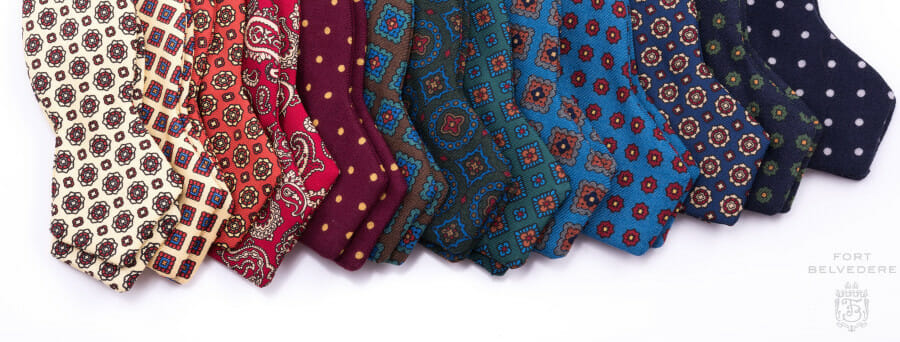
You can spend your money on more casual items that you’ll actually use, like sport coats or sweaters. You can appreciate the beauty of something like an ancient madder bow tie, but that doesn’t mean you need to buy one; maybe you’re more of a casual knit necktie guy instead. As the great philosopher, Socrates said, “know thyself.”
3. Read Item Descriptions Closely
Just like viewing images carefully, reading the product details closely is an important key to success in making online purchases. However, it is also the opposite of how you would normally read online, which is to skim and scroll quickly. Resist this impulse and expand the full description and details of something you want to buy, reading slowly.
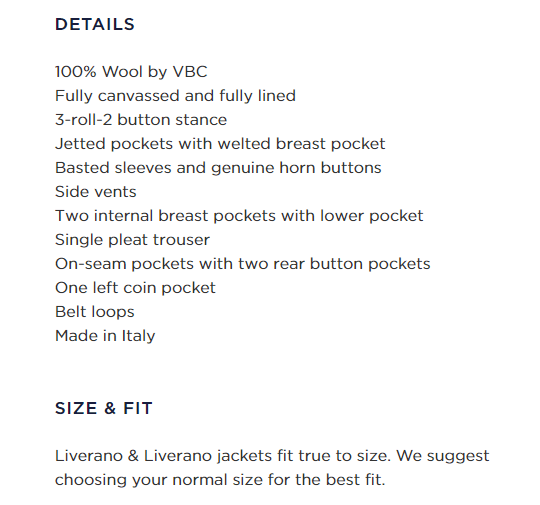
When I teach college classes online, I find students can skip part of the instructions and end up failing the assignment; don’t fail at your online purchases. Check dimensions and measurements in particular. How long and wide is the tie? How high is the rise on the pair of pants? Is the garment fully lined? Is it slim or regular fit? Know what aspects of classic menswear matter to you, and verify them by reading the description. Fabric weight is important when judging what season the item is good for. The best stores will provide such key information. If a detail is missing, like the width of a trouser leg, email the company to ask.
4. Know Your Measurements
A key component of reading closely is finding the exact measurements for your size, since sizing isn’t standard from company to company. This requires you to know your own measurements.

For most ready-to-wear items, dimensions are provided online as a flat measurement, so you can take existing articles of clothing from your closet and measure them yourself without assistance. On a shirt or jacket, the key dimensions would be the length of your sleeves, the width of your shoulders and chest and perhaps the waist. For pants, know your waist and thigh width, the width of your pants leg opening, and ideal rise. Inseam is needed for casual pants but unimportant for dress pants, which usually come unhemmed. Since you can’t try before you buy, comparing these key measurements to a chart on the company website will determine whether something will fit you or whether you need to size up or down.
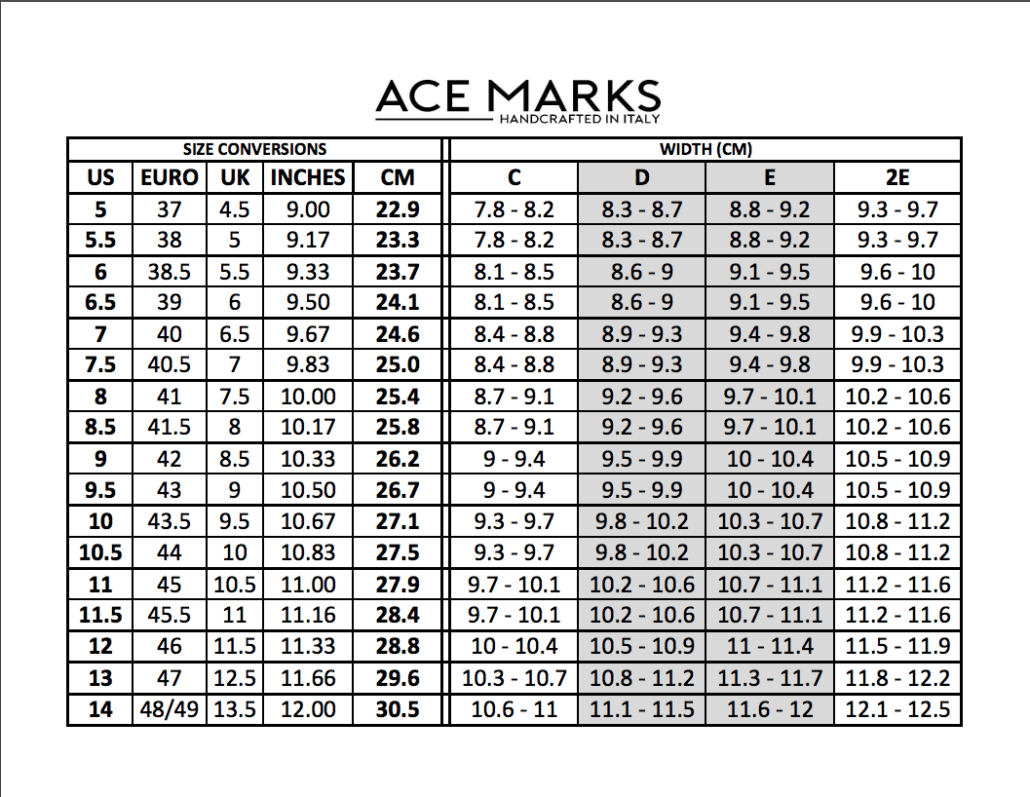
Remember, sizes aren’t standardized in all dimensions. One brand’s overall fit can be more snug or generous than another’s. When in doubt, always go slightly bigger rather than smaller, as a tailor can more easily take in clothes than let them out. On websites outside the United States, dimensions will require you to convert from centimeters to inches, so be aware of that.
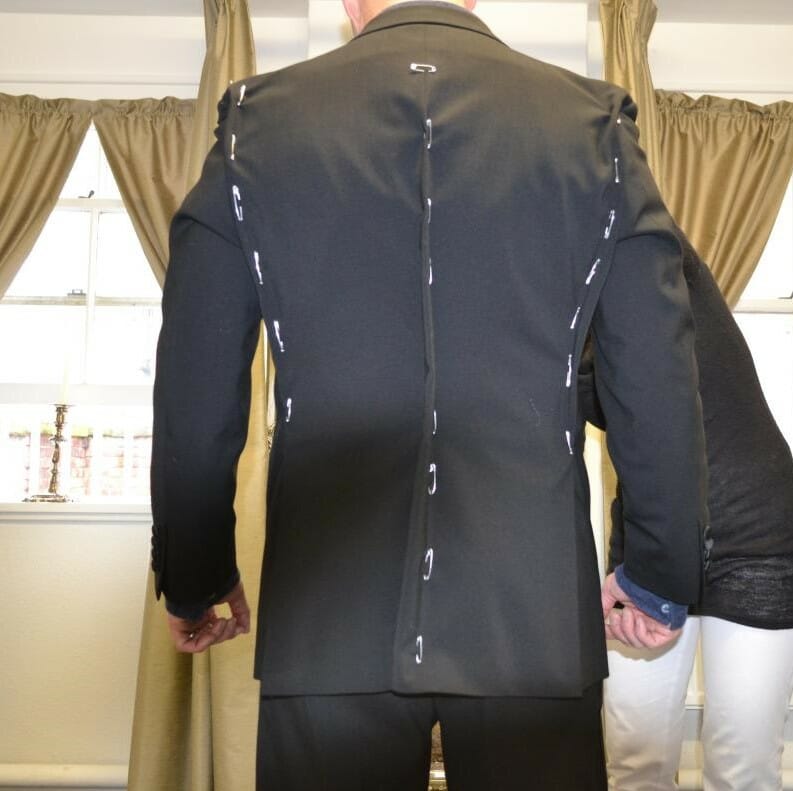
Beyond this, learn the ideal measurements for accessories, as well; how long are your favorite ties? How many inches square are your best pocket squares? It’s somewhat remarkable that a set of three or four numbers determines not only a good vs. bad ready-to-wear fit, but satisfaction as opposed to disappointment, so there’s no excuse not to record your measurements in a document when online shopping.
5. Take Your Time – Don’t Rush to Buy
Avoid impulse buys at all costs. Online shopping can be too easy; something catches your eye and with autofill and a few clicks, you’ve paid for it and it’s on its way to your door. Don’t just throw something in your cart and buy it in two minutes. Even though everything online seems to move at the speed of light, you can slow down. Just like reading closely, this requires you to go against normal practice. Let that shirt or tie or pocket square sit in your cart for a while, so you can think about it. If you still desire the item and find you’re interested after a few days, pull the trigger.
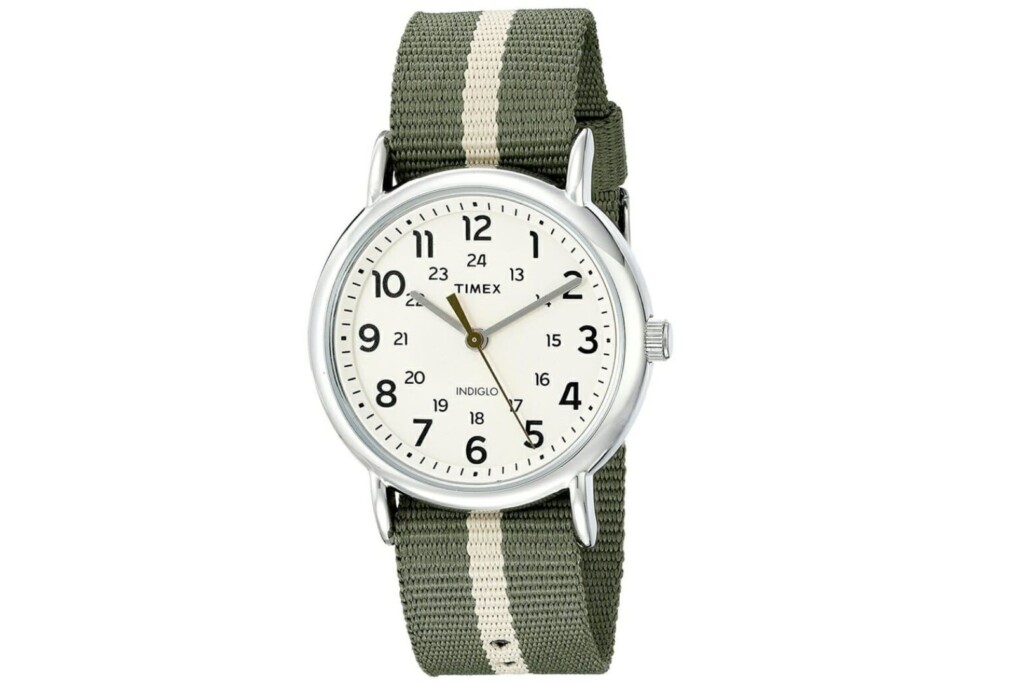
Here’s an additional budgetary exercise to try: once you find something that catches your eye, let it sit in your online shopping cart for multiple weeks. If you find yourself thinking about the item repeatedly and visit the site again to view it again, this is a sign that it’s likely worth buying. Most of the time when I’ve considered something for that long, I don’t end up regretting the purchase. What’s more, the anticipation and looking at the product often actually helps build enjoyment and appreciation when it finally does arrive. Just don’t wait too long if you wear a popular size, if an item seems to be going fast, or you know it’s something a lot of people will want.
6. Avoid Outlet Stores and Extreme Discounts
Especially if you have a strict clothes budget, it can be tempting to buy items off from outlets or at deep discounts, but, based on experience, this is an unreliable process. End-of-season sales usually feature things that were not popular for good reason, like an unusual color or pattern. Unless you’re sure you like the style, don’t help the store clean mistakes off its shelves. Stores that sell bargain items all year long, like $10 ties and suits for $199, are also definitely to be avoided if you’re serious about quality. Outlet shops similarly offer the lure of getting a steal, but, again, you won’t find premium items.
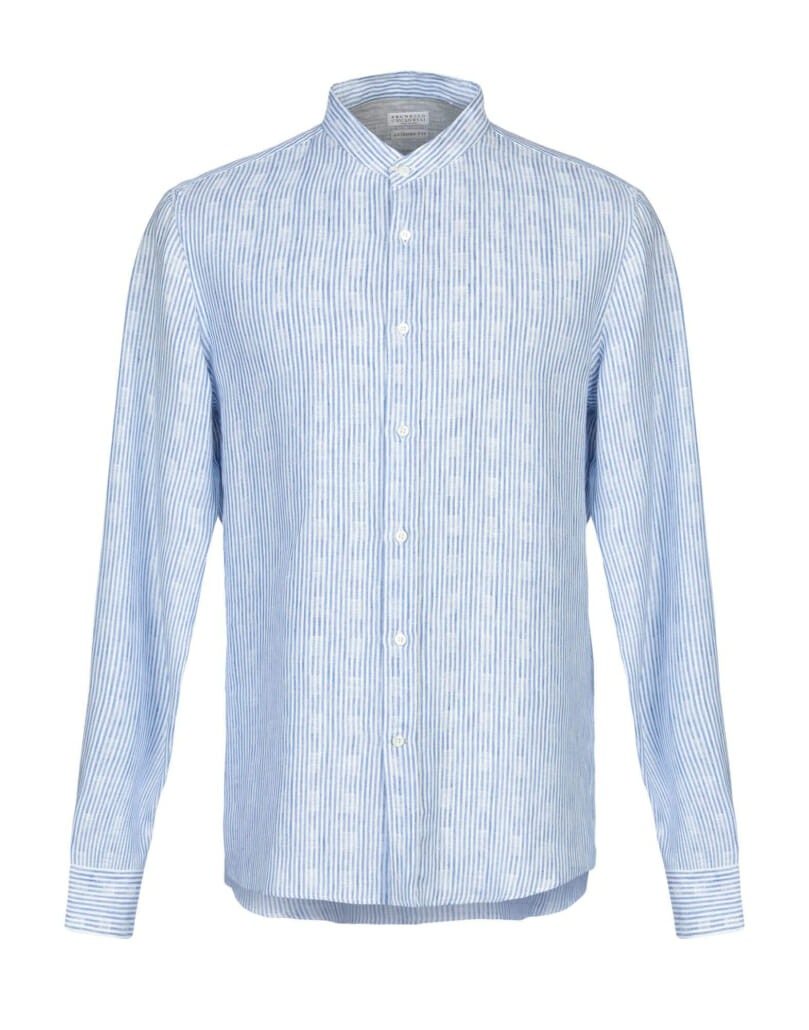
The Italian outlet site Yoox, which sells Brunello Cucinelli, Tod’s, Armani and others, is an example of what can go wrong with relying on deep discounters. Because product photos lack multiple angles and contain almost no written descriptions or measurements, you’ll find most of your purchases will go back. They’ll be the rejects of the previous seasons, the products that didn’t move well, and either look strange or fit badly. eBay and the secondhand market can be better if you find one-offs of quality, but with resellers, reading the details and scrutinizing the photos is even more important.
7. Rely on Brands You Trust
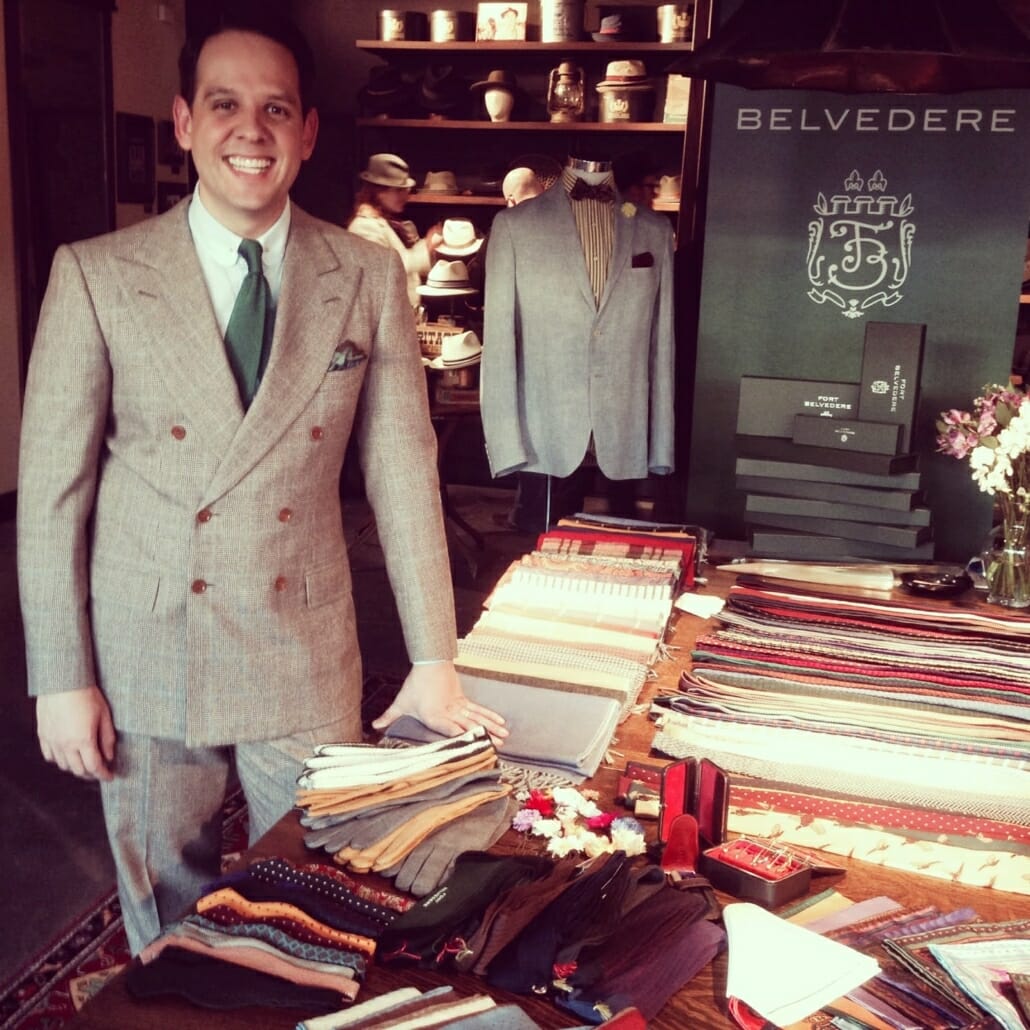
Instead, learn to use trusted shops and brands you know from experience will fit you well while offering high quality items; they’ll eliminate the risk. If you find a company that is consistent and whose items suit you, lean on them for most of your purchases. Fort Belvedere is a great example, as it is backed by the reputation of The Gentleman’s Gazette and founder Sven Raphael Schneider, who personally selects and designs the world’s finest products to offer for sale. You can trust it and order without anxiety. Customer reviews can also help filter the best products and brands, but most menswear boutiques don’t provide them, while larger stores will. The Fort Belvedere site is an exception in this regard, providing authentic customer feedback that reinforces the quality of its offerings.
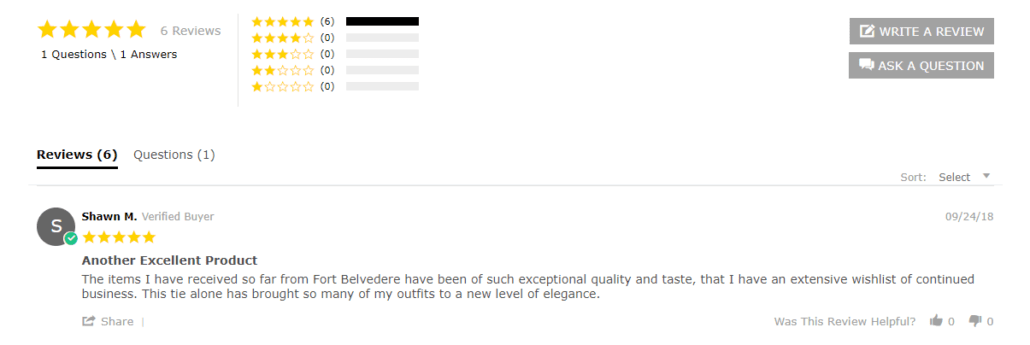
Conclusion
When it comes to buying classic menswear, the experience of shopping is often a reward in itself. Bespoke tailors often talk about how their clients love to return on a regular basis because they enjoy selecting fabrics, getting measured, talking to the artisans, and so on. Even if you can’t afford luxury bespoke, there is something about browsing in a boutique and chatting with a fellow aficionado that makes an in-person experience valuable. So, ultimately, it’s worth trying some purchases in physical stores and even taking a pilgrimage to a sartorial destination. Still, most of us can’t pick up and travel to Naples for a shirt or Beijing for a suit, so we need to rely on the internet to indulge our interest. By following the various steps detailed above, we can turn the online shopping process into a fun experience of its own with successful results.
Do you use any of the steps presented in the article? Do you have buyer tips of your own? Share with the Gentleman’s Gazette community in the Comments section below.
We ranked the best shops on London’s Jermyn Street
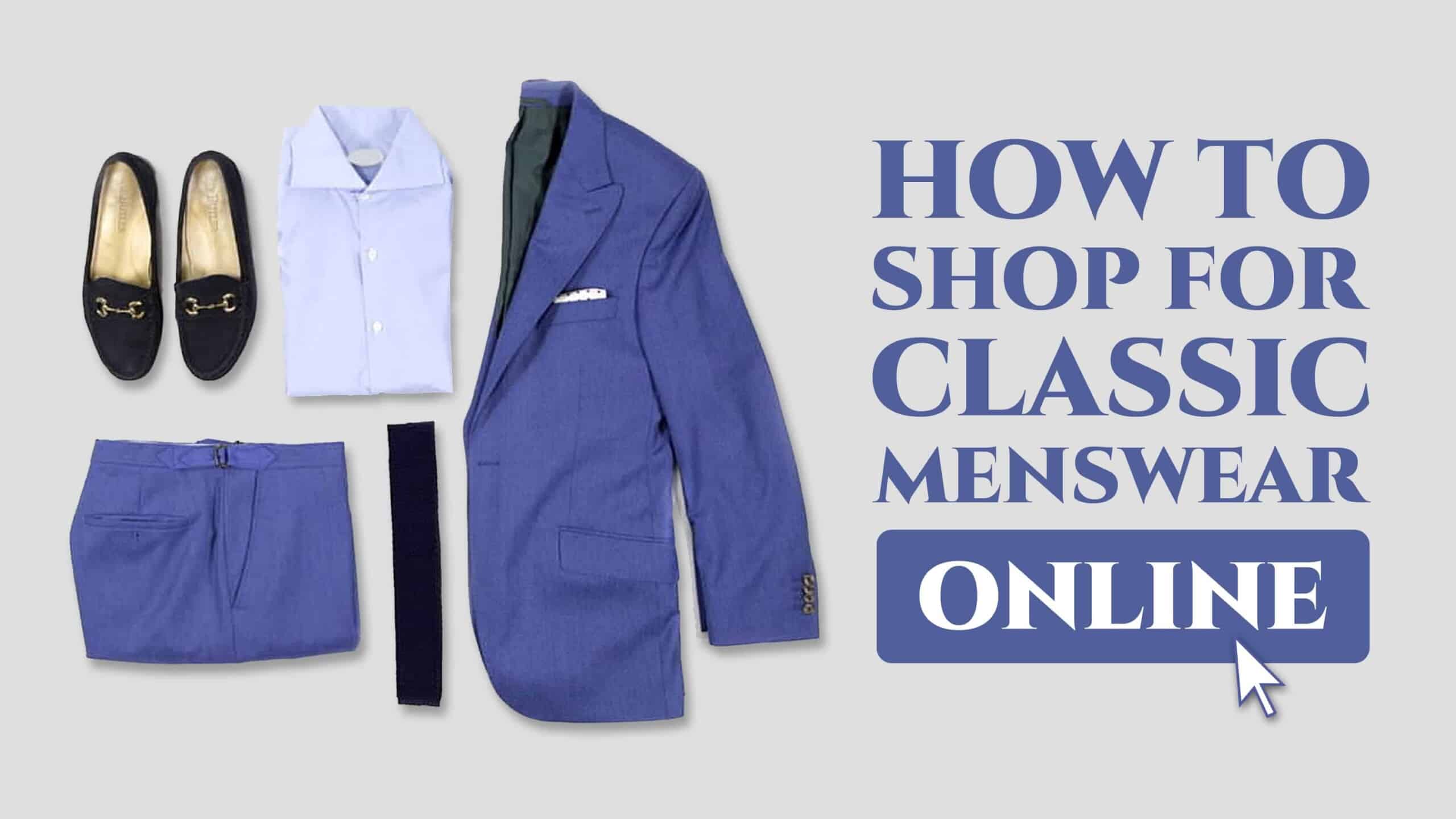
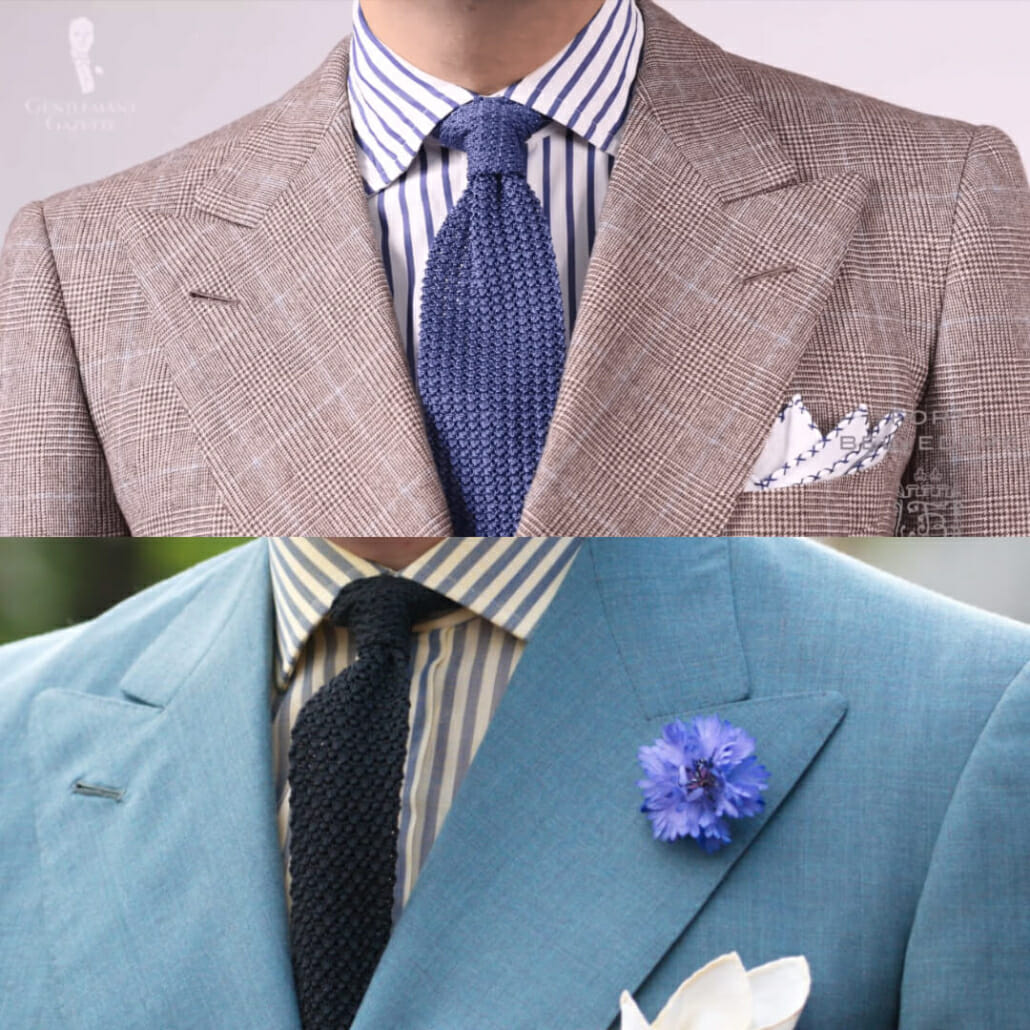
As an experienced and passioned online-shopper, I would say that most of these tipps are very useful and should be enough to avoid major deceptions. Online-shopping can be such a great experience and benefit, and it’s good to read this on the site of authority like this one. Thanks a lot for this article.
Thanks, Alexander. We appreciate the comment. :)
Ditto. Another excellent (and extremely well written) article, thanks, Doctor!
Very nice guide for those beginning at online shopping.
What I usually do is, for each season (autumn/winter and spring/summer), create an Evernote file which contains each garment I’ve seen online and which interest me, along with the original price and some other info.
If possible, I will go to physical shops to try these garments if possible, in order to be sure of the size and fit.
Then, I let a few weeks/months pass, and I actually buy items I’m sure I like (barely any impulse shopping, as I’ve had to think about each item and what I need/want), and usually at discounted prices (I usually buy on The Rake and a few little French labels : Editions MR, Pini Parma, Officine Générale, etc.)
But hey, maybe I’m too organized and have too much time to waste. ^_^